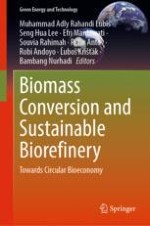2024 | OriginalPaper | Buchkapitel
Extraction, Isolation, Purification, and Potential Application of Xylose and Xylooligosaccharides from Lignocellulosic Biomass
verfasst von : Euis Hermiati, Hans Wijaya, Dwi Ajias Pramasari
Erschienen in: Biomass Conversion and Sustainable Biorefinery
Verlag: Springer Nature Singapore
Aktivieren Sie unsere intelligente Suche, um passende Fachinhalte oder Patente zu finden.
Wählen Sie Textabschnitte aus um mit Künstlicher Intelligenz passenden Patente zu finden. powered by
Markieren Sie Textabschnitte, um KI-gestützt weitere passende Inhalte zu finden. powered by
